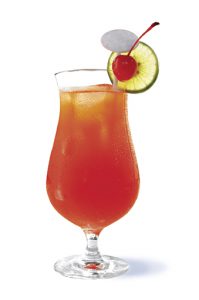NOW SERVING: THE RETURN OF RESTAURANTS AND BARS
Sector shakes off the economic funk from the past two years, yet challenges remain
By Lori Widmer
What a difference a year makes.

As COVID loosens its grip on the global economy, the restaurant and bar industry is beginning to shake off the economic funk that had dogged it for the last two years. Even amid soaring gas prices, consumers were seeking entertainment again—National Restaurant Association figures show that total sales for eating and drinking establishments hit $75.4 billion in March 2022, a 1% increase over February 2022 and a full 3% more than January 2022. Surprisingly, those sales top even pre-pandemic sales, which totaled
$66.2 billion in February 2020.
However, even with sales booming, the industry still has some critical challenges ahead. Many are facing the challenge by changing up their operations and rethinking offerings. Richard Willetts, assistant vice president of field operations for Berkley Luxury Group, says that the pandemic and the urge for people to eat out, brought out the creativity of the industry. He says new trends in the fine dining and upscale casual space include “fewer menu choices and higher menu prices, more pre-fixe tasting menus (fast food combo meals for fine dining), restaurants open fewer days a week (in part due to staff shortages and burnout), increased diversification of revenue streams (e.g., more retail items for sale), stricter cancellation policies, and increased demand for private dining—supper clubs.”
Overriding everything is the larger challenge for the industry: staffing. Lack of enough staff is making it tough for some establishments to get back to full capacity, says Christian Enwright, area president for Risk Placement Services. In New England, where there are no longer restrictions on dining capacity, Enwright says establishments are still hamstrung. “A lot of places are having a hard time getting people to come to work, which is affecting their ability to operate,” he says. “They’re having a hard time finding enough wait staff to be open full time.”
That shortage of help, says Chris Jones, head of Small Commercial Product and Underwriting for The Hartford, could be increasing risks. In the current tight labor market, “hiring is more difficult and workers are often less experienced. From a risk perspective, this puts more pressure on safety training for food prep and for workplace safety.”
Emerging trends
That staffing challenge will continue, says Enwright. Surprisingly, even in Florida where COVID-19 was not met with blanket restrictions, he says the issues persist. “They’re still dealing with the labor shortage there, as well.”

“Technology advances will continue to significantly impact the restaurant business in every way imaginable. Cyber insurance coverage is growing as a key risk transfer element for the restaurant industry.”
—Richard Willetts
Assistant Vice President, Field Operations
Berkley Luxury Group
When will staffing challenges ease? “I would think that this will probably persist throughout 2022,” Enwright adds.
That kind of pressure on establishments to serve customers, avoid public health issues, and have enough staff to cover demand has pushed innovation in the industry. “Two innovations that came out of the pandemic were alcoholic beverage deliveries and street dining (streateries),” says Willetts. Those additions were made possible when states relaxed restrictions on public consumption of alcohol and offered special permits for outside dining.
Will it last? “The industry wants these changes to become permanent, but many states are pulling back on these special permits,” says Willetts.
Yet, other technology stemming from the pandemic remains. Willetts says he’s seen real-time inventory tracking, electronic ordering and payment, and vendor management via point-of-sale system. “Technology advances will continue to significantly impact the restaurant business in every way imaginable,” he says. “Cyber insurance coverage is growing as a key risk transfer element for the restaurant industry.”
Then there are the more common issues, says Jones. “While there are always emerging trends, business owners need to be on the lookout to control their slip-and-fall exposure. As more customers return to restaurants, it is important to make sure your space is safe for customers.”
The insurance claims landscape
Fortunately, COVID-related claims gained no toehold in the industry, say the experts. “COVID didn’t lead to a ton of claims for the casualty side of the business,” says Enwright, who adds that COVID-related business interruption claims were not successful.
Social inflation, however, is having an impact, says Willetts, who has seen “higher dollar liability settlements. There is a significant increase in ‘first notice claimants’ with attorney representation driving up ultimate claim costs.” Even excess liability limits are being tested more often with serious slip-and-fall claims, he adds.

“A lot of places are having a hard time getting people to come to work, which is affecting their ability to operate. They’re having a hard time finding enough wait staff to be open full time.”
—Christian Enwright
Area President
Risk Placement Services
Another claim trend Willetts sees is one that the restaurant and bar industry possibly did not anticipate. “ADA (Americans with Disabilities) claims for non-compliant websites (not accessible to blind or deaf patrons) have become common and are forcing restaurants to update their websites to meet ADA standards,” Willetts says.
Along more common claim lines, Jones is seeing the slips and falls and cuts and burns as the main claim frequency drivers. Both Enwright and Willetts also see liquor liability claims still driving claim severity.
That’s caused underwriters to pull back on some of the risks. Enwright has seen carriers exclude such things as full liquor limits and assault and battery. “The other thing we’re seeing is changes in underwriting philosophy, depending on the particular company’s experience.” Everyone, he says, is adding communicable disease exclusion to policies. Other changes: “You will see abuse and molestation exclusions, and some carriers are putting on firearms exclusions.”
Despite it all, there is healthy com-petition. “We’ve seen some new capacity enter the marketplace, which obviously makes it a little more competitive,” says Enwright.
“I would describe the insurance space for restaurants as ‘adequately served’ (no pun intended), with few significant changes in coverage, ample capacity and healthy carrier competition,” says Willetts. Even so, he’s seen some carriers opting out. “There have been a few market departures by carriers that saw profits erode when exposures were not accurately contemplated, leading to inadequate premium charges.”
Rates, says Enwright, are flat to 5%, which is an improvement over the COVID-nervous market of late. “For the past couple of years, it’s been really all over the map during COVID.” Stabilization has returned to the market, he notes.
Not all lines of business are experiencing that kind of landscape. “One line of business that has seen significant rate increases is excess/umbrella liability—driven by increased claim costs into those layers of coverage,” says Willetts.
Advice for agents and brokers
That’s when agents and brokers can become a trusted resource for customers, says Enwright, especially where exclusions are concerned. “It’s incumbent on brokers and agents to be making sure that we’re negotiating those with the carriers and adding back coverage where we can.”

“Restaurant owners need quality advice about their insurance now more than ever. The agent needs a carrier that has products that can flex and stretch specifically around a restaurant.”
—Chris Jones
Head, Small Commercial Product and Underwriting
The Hartford
“Restaurant owners need quality advice about their insurance now more than ever,” says Jones. “We see a couple of critical things successful agents are focusing on. The first is deep coverage consultation specific to restaurants. “The agent needs a carrier that has products that can flex and stretch specifically around a restaurant.
The second is leaning on simple systems that truly help the restaurant owner, and the best example of that is helping set up their comp with payroll billing,” he adds. “With employee turn-over high, staffing numbers are going to flex quite a bit.”
Agents, Jones says, need to build relationships with carriers that have the capability of connecting payroll systems to their workers compensation programs. “Successful agents understand how critical a selling feature can be and they understand how the carrier can plug into multiple payroll systems. That kind of billing for comp makes everything about the product simpler for the customer and they’ll appreciate it—especially around annual audit time.”
Customers will also appreciate an agent or broker who ensures that their policies aren’t carrying new exclusions, and that it’s adequately priced. “Make sure that they’ve got the assault and battery coverage, the abuse and molestation coverage, that they don’t have firearms exclusions, and make sure that the policies are rated properly,” says Enwright. “There are different ratings depending on what your percentage of liquor is. If [the exposures] are not being presented correctly to the underwriters, they could be over-charged.”
Another thing agents and brokers need to advise their clients on: Under-writers, says Enwright, are now looking at bar and tavern reviews on Yelp to see what the patrons say about the place. For example, does the bar host a happy hour when they said they didn’t on the application form. Enwright says that more concerning is how often disgruntled former employees were often the source of negative reviews. Retail agents, he advises, should read the Yelp reviews and discuss them with their client so they can present the real story to the underwriter.
In general, Enwright says, agents and brokers should remind their clients that basic risk management can go a long way toward preventing costly claims. “It’s not hard to run a tight ship in this industry. Stick to the basics, and you can mitigate a lot of what ends up leading to claims.”
For more information:
Berkley Luxury Group
www.berkleyluxurygroup.com
The Hartford
www.thehartford.com
Risk Placement Services
www.rpsins.com
The author
Lori Widmer is a Philadelphia-based writer and editor who specializes in insurance and risk management.





